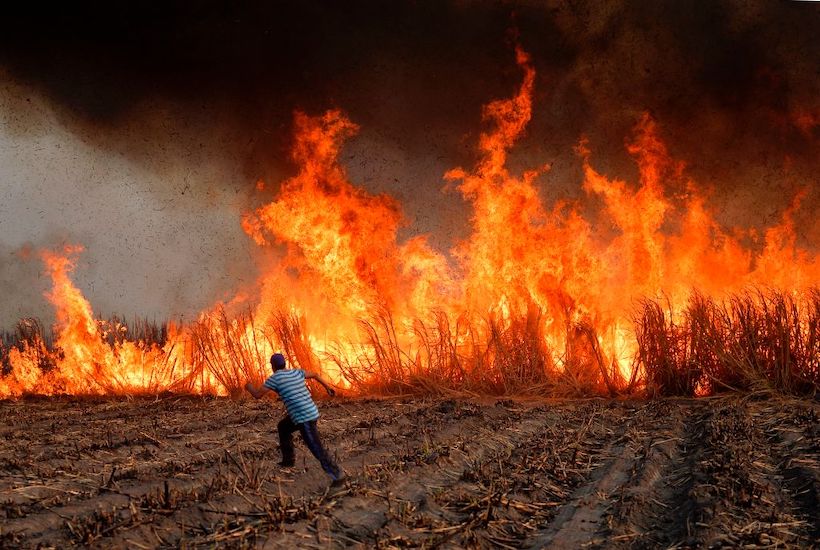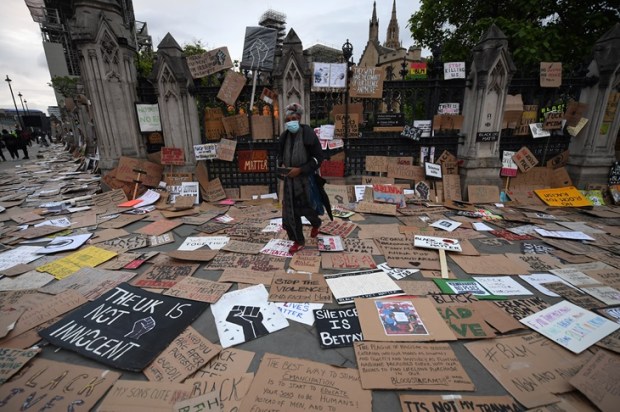Here is a basic question: Would it be possible to assume that deliberately setting fires in Australia could eventually become an efficient tool of pyro-terrorism in the future?
The Spectator Australia is not suggesting terrorism has been a motive for any of this season’s fires here. Until any of the current alleged Australian arsonists have been thoroughly investigated, charged and been subject to due process, it is self-evidently impossible to ascribe any specific motives to them, so this argument must by definition be entirely hypothetical.
However, the proposition is nowhere near as outlandish as it might first appear. Indeed, it has been a reported threat for many years.
Daniel Lewkovitz, a 20-year expert in security and anti-terrorism, told Sky News just days ago that Australia is not immune to “fire jihad”, warning the intentional and deliberate starting of bush and forest fires is occurring in countries overseas. He said fire has been used as a tool to spread what we would normally regard as terrorism. “Using fire as a form of violence is not a new phenomenon”, he said.
Adrian Sheppard holds a Masters in Homeland Security and Defence from the United States Naval School in Monterey, California. According to him, “arson has been one of many tools employed by terrorists”. “Arson may be comparatively less emotionally impactful than the use of explosives, for example”. However, as he points out, “it … may enable individual terrorists or terrorist cells to carry out multiple attacks before being neutralized, which makes them perhaps more damaging than had explosives been used”.
Robert Arthur Baird is a major at the United States Marine Corps. In a 2005 article submitted in requirement for the Degree of Master of Operational Studies, he argued that instead of using expensive and readily detectable weapons of mass destruction, future terrorists will easily ignite several massive wildfires to severely damage national economies, impact military forces, and terrorise the local population. After stating that “studies of wildfire conflagrations have shown that they can rival the destructive force of nuclear weapons, giving the terrorist a weapon with the same effect with a great deal less of effort and risk”, Baird concluded his academic paper with the following prediction:
Just as past terrorists utilized improvised incendiaries to weaken the steel and structure of the World Trade Center causing it to collapse under its own weight, future attacks may bypass the strength of our Homeland Security defences and attack our national vulnerability to catastrophic wildfire. Future terrorists will undoubtedly use it again as an asymmetric terror weapon – it is only a matter of time.
David Romano holds the Thomas G. Strong Professor of Middle East Politics at Missouri State University. He is the author of numerous publications on the Middle East and is a leading expert on “political violence” and “politicised Islam”. In a June 2019 article entitled ‘Arson Makes its Way into the Terrorist Repertoire’, Romano explains:
The arson attacks serve a common objective of terrorists since time immemorial – fomenting instability and popular frustration towards a government incapable of protecting its people or their property. Fields of crops remain impossible for even the most capable security forces to watch over and thus make easy targets for ISIS… Without security from their governments, rural communities lose both their incentive and their means for paying taxes to that government.
Coincidence or not, this is precisely what happened in Australia as a result of the national bushfire crises, as noted by ABC journalist Laura Tingle:
People are frightened and angry. Some have lived through a fire or just faced the anxiety of trying to evacuate family through massive traffic jams … Such people tend to lose their faith in the capacity of governments to comprehend, let alone respond, to a crisis like this that is likely to continue for at least some months.
Al-Qaeda, the Islamist organisation founded by Osama bin Laden in the late 1980s, has openly condoned wildfire arson as an efficient form of terrorism. America’s ABC News has reported that Al Qaeda’s online magazine “Inspire” recently published a guide on how to start widespread wildfires in order to promote jihadi attacks, offering detailed advice on how to start huge bushfires with timed explosives and how to build remote-controlled bombs. Inspired by such advice, Al Qaeda operatives may consider that “dabbling” in a terminal “dirty bomb” might be too arduous, so instead, opt for their freedom to choose an archaic execution of natural vulnerabilities and set wildfires as a weapon of mass destruction.
Similarly, the Islamic State has been known to celebrate the death of infidels in wildfires in the U.S. and has taken credit for setting crops fires in Syria and Iraq. In disputed territories across northern Iraq and Syria, seemingly endless fires threaten already battered Yezidi communities and rage across suspected mass graves. Islamic State militants have been targeting the fields of tribes and villages that opposed them and helped the Kurds or the Iraqi government defeat the organization during the past few years. What is more, the Middle East Media Research (MEMRI) has spotted at least four posters distributed by the Islamic State (via Quraysh Media) containing literally incendiary messages to its Muslim devotees. Two of these posters include images of firefighters battling wildfires.
The terror technique of simultaneous arson attacks in dry seasons is all too well known in Israel. A few years ago, 13 Muslims were arrested for arson jihad as fires raged through the northern port city of Haifa in “acts of terrorism”. And more recently, the Palestinians in Gaza have sent kites fitted out with incendiary devices across the border into Israel and have set fire to thousands of acres of cropland. According to Professor Romano “Just as the tactic of suicide bombings, so it seems with arson now. Hamas and Palestinian militants have been using arson against Israeli agricultural fields for some time – most recently via kites and hot air balloons carrying incendiary devices over the Gaza-Israel border to set Israeli fields alight. The example may have now crossed other enfeeble borders to the even more inventive and destructive imaginations of ISIS terrorists”.
Since terrorist groups are instructing militants to start blazes in all these countries across the globe, and encouraging others to follow suit, there is no reason to doubt their possible use in Australia. Confronting as the thought may be, Australia is at grave risk of pyro-terrorist attacks, when terrorists may decide to unleash the latent energy in the nation’s landscape in order to terrorise the civilian population and to severely damage our national economy. Sydney and Melbourne have both suffered jihadi attacks and murders — and nobody should ever doubt the capacity and willingness of radical Islamists to engage in destruction motivated by zealotry and hatred of the West.
As noted by Joseph W. Pfeifer, Chief of Counterterrorism at the Fire Department of the City of New York, the recognition of terrorists’ interest in the use of fire as a weapon and the resulting complexities are important considerations for every responsible authority and its security forces.
And yet, despite the knowledge regarding the new kind of jihad trailblazing on the horizon, Australian authorities at all levels of administration (federal and state) seem completely ill-prepared to deal with the new challenge.
It is therefore deeply regrettable that our federal and state governments have refused to acknowledge the potential threat of terrorist fires, and protect our rural communities from the imminent threat of such perfectly possible and even predictable terrorist strategy through their landcare strategies.
Dr Augusto Zimmermann is Professor and Head of Law at Sheridan College, Perth/WA. He is also adjunct law professor at The University of Notre Dame Australia (Sydney campus), President of the Western Australian Legal Theory Association (WALTA), and former Law Reform Commissioner with the Law Reform Commission of Western Australia.
Got something to add? Join the discussion and comment below.
Got something to add? Join the discussion and comment below.
Get 10 issues for just $10
Subscribe to The Spectator Australia today for the next 10 magazine issues, plus full online access, for just $10.


























Comments
Don't miss out
Join the conversation with other Spectator Australia readers. Subscribe to leave a comment.
SUBSCRIBEAlready a subscriber? Log in